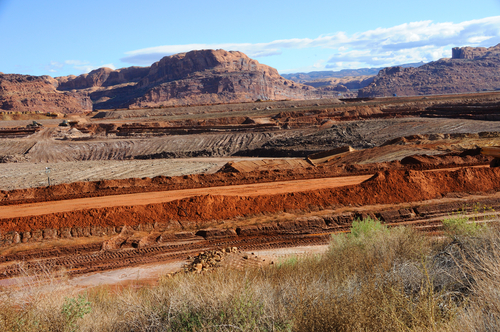Superfund Site Redevelopment—Removing Barriers
 |
Although the SRI has a great track record of getting Superfund sites returned to use, some sites still remain undeveloped despite being cleaned up years ago because barriers remain that hamper site desirability. To address these barriers, the SRI implemented the RTU Initiative with the goal of removing or modifying barriers and returning the sites to beneficial uses.
In general, the EPA cites the following barriers to appropriate reuse:
- A lack of understandable information about the site,
- The stigma of being a Superfund site,
- Liability concerns,
- Site ownership issues, and
- A lack of clear information regarding what uses might be appropriate for the site.
To address these barriers, the RTU Initiative was developed with four main components: demonstration projects, partnerships, policy, and communications, with emphasis on sites where remediation is complete. According to the EPA, “There are over 1,000 construction-complete sites. Many of them remain idle or underutilized, and remedies could be subject to damage due to trespassing or inappropriate activities. The RTU Initiative was designed to focus on these sites.”
Join us for our CERCLA Cleanup webinar December 16 to learn tips on how to manage your cleanup projects each step of the way in a cost-effective manner. Learn more.
Demonstration projects are a core part of the RTU Initiative, and the EPA leverages diverse stakeholders and partners to address site reuse. These may include site owners, local government officials, athletic organizations, other community groups, property owners, and potentially responsible parties (PRPs). In some cases, the EPA has signed letters of intent with stakeholder partners “to capture the good-faith efforts EPA and the local partners will make to further the reuse of the site.”
One example of how this works is through RTU demonstration projects where stakeholders connect with the U.S. Soccer Foundation, which has a national partnership with the EPA to develop suitable cleaned up hazardous waste sites as safe and productive recreational and ecological parks. The Foundation provides a number of services toward this goal, including:
- Site assessment and professional field-building expertise from companies specializing in building soccer fields and including field design, engineering, and landscaping;
- Survey work;
- Conceptual drawings; and
- Engineering designs.
CERCLA Cleanup: How “Potentially Responsible Parties” can Minimize Liability Risks and Control Costs
Join us on Tuesday, December 16, when our presenter, a seasoned environmental professional who has helped many companies manage Superfund site cleanups, will show you how to manage your cleanup projects step-by-step. Register now.
The EPA believes that policy and communications, like demonstration projects and partnerships, go hand in hand to aid reuse activities. For example, the Agency uses several tools to help stakeholders understand the status of a site and give them the confidence necessary to move forward with reuse projects. These may include:
- Site reuse profiles are used in some EPA regions to highlight a site’s background, environmental history, and reuse status;
- Ready for Reuse (RfR) determinations, which are environmental status reports written in clear language that is designed to provide important information about a site so it can be used without compromising protection of people and the environment; and
- Comfort letters that provide information about the site and can clarify liability and other issues for prospective purchasers and site owners.
According to the EPA, in some cases, the remedy can be as simple as removing or modify fencing around sites that may actually—entirely or in part—no longer need them. Since fences are a common method to ensure site safety during remediation, their continued presence may unintentionally signify that a site is still hazardous when it is not. For example, the EPA says, “After cleanup, if the fence is not a part of the remedy, it may be removed,” and adds, “Fences that surround entire sites may also be altered so that they surround only the portions of the sites needing protection, such as waste containment areas or wells.” Other things such as misleading signs and barbed wire can also be detrimental when they remain in place after site cleanup, and the EPA says, “Eliminating these potent symbols, when the responsible EPA officials confirm that they are no longer needed, can open the door to reuse.”

Helpful. More tips and topics relating to reuse and marketability of remediated CERCLA sites would be a great idea.